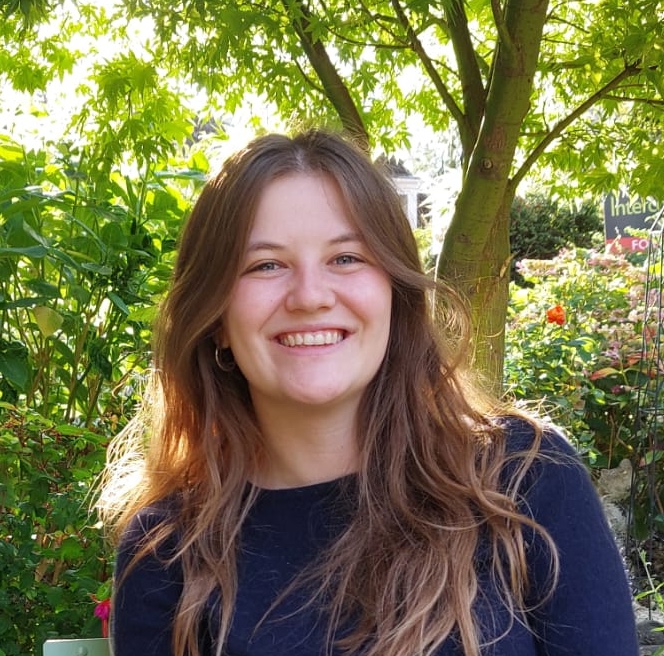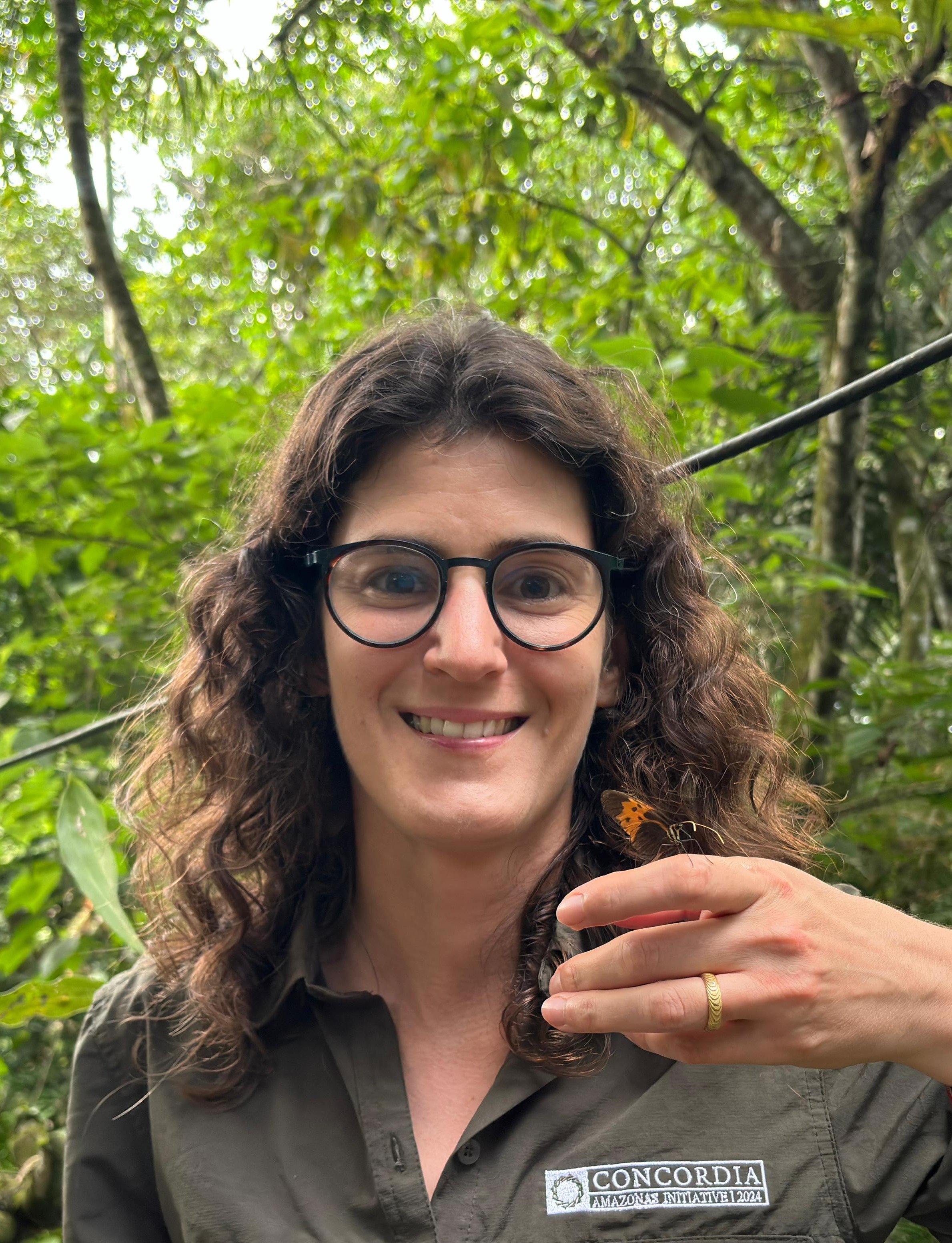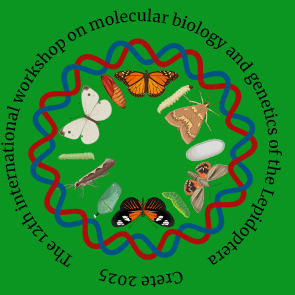We are happy to present this year's keynote speakers below!
(oder by program order)
 Charlotte Wright
Charlotte Wright
https://www.sanger.ac.uk/person/wright-charlotte/
Chromosome rearrangements, such as fusions and fissions, are a ubiquitous feature of eukaryotic genome evolution. However, our understanding of the evolutionary forces that shape rates of chromosome rearrangements and the effect of chromosome rearrangements on processes such as speciation and adaptation remains in its infancy. Polyommatina is a young subtribe of blue butterflies that evolved 23 million years ago and is characterised by two modes of chromosome evolution: extreme stability in chromosome number in the majority, with rapid chromosome number change in some clades of species. Combined with the high diversification rates of species in this group, Polyommatina is an ideal group to understand the forces that modulate chromosome rearrangements and their consequences on diversification. Chromosome-level genomes for 27 species of Polyommatina reveal a complex history of chromosome rearrangement in genus Lysandra and Polyommatus subgenera Agrodiaetus and Plebicula. Parallels between the histories of fission in each group are found. This work deepens our understanding of chromosome fission, a fundamental process that shapes the evolution of genome structure across the diversity of eukaryotes.
 Ines Drinnenberg
Ines Drinnenberg
 Yongping Huang
Yongping Huang
Molecular breeding of silkworm strains for better silk and resistance to NPV virus
The silkworm is a crucial industrial insect and serves as a model for Lepidopteran insects. Currently, the silkworm rearing market in China is valued at approximately $40 billion, contributing to a broader industrial market worth $400 billion. However, as labor costs in China have steadily increased over the past two to three decades, silkworm rearing has undergone two significant trends. First, the primary rearing areas have shifted from the eastern to the western regions of China. Second, large-scale industrial rearing practices have emerged in Eastern China. These changes have heightened the demand for superior silkworm strains that are both high-yielding and disease-resistant. To develop better silk strains, we have concentrated our efforts on male-only strains. Our research into sex determination mechanisms has led us to construct male-only strains by inserting a toxic protein into female-specific exons of the doublesex gene. Additionally, we have established a system to separate male and female eggs using color and fluorescence markers. For disease-resistant strains, we utilized genome editing techniques to create virus-resistant silkworms. Initially, we identified virus key genes and constructed resistant loci in a laboratory strain (multi-voltine) through the transgenesis of Cas9 and virus-targeting sgRNA. We then applied this method to industrial strains, resulting in significant resistance to the BmNPV virus. These innovative approaches are set to enhance our silkworm industry and facilitate the further expansion of large-scale rearing operations."
 Joana Meier
Joana Meier
https://www.sanger.ac.uk/group/meier-group/
Drivers of rapid diversification in ithomiini butterflies
Ithomiini butterflies, a tribe of Neotropical butterflies, are an ideal study system for drivers of rapid diversification. Some ithomiini lineages have diversified exceptionally fast, while others have done so at a much slower pace. By comparing their genetic basis of relevant traits, rates of hybridisation, chromosomal rearrangements and other factors, my group aims to elucidate the factors underlying variation in diversification rates. We find important roles of hybridisation contributing beneficial genetic variants and chromosomal rearrangements strengthening reproductive isolation. Complex rearrangements involving multiple chromosomes, often including sex chromosomes, seem to play particularly important roles in speciation.
 Antonia Monteiro
Antonia Monteiro
https://lepdata.org/monteiro/research/
The developmental origin and regulation of a complex repeated trait: eyespots on the wings of Lepidoptera
Lepidopteran eyespots have evolved multiple times independently on the wings of butterflies and moths perhaps due to their successful predator attack diverting role. Within nymphalid butterflies, eyespots have a single origin and are homologous. The nymphalid eyespot gene-regulatory network (GRN) appears to be derived from a partial co-option of the appendage GRN due to shared genes and shared cis-regulatory elements of genes within the network. This eyespot GRN, which was initially activated on the ventral hindwing, became activated on the dorsal surface of both wings, many millions of years later. Experiments in one species indicate that the activation or silencing of the network in different wing sectors and surfaces is due to the regulatory action of selector genes such as Hox and Tbox genes.
 Anyi Mazo-Vargas
Anyi Mazo-Vargas
https://medschool.duke.edu/profile/anyi-mazo-vargas
Evolving Patterns: An Evo-Devo Exploration of Butterfly Wing colors
Lepidoptera exhibits remarkable diversity in wing shapes and color patterns, traits often associated with adaptive roles. This diversity, combined with the relatively simple tissue structure of their wings, makes Lepidoptera a compelling model system for studying the development and evolution of morphologically complex and ecologically significant traits. Various signaling pathways orchestrate the formation of wings and their intricate patterns, with the Wnt protein family emerging as key players in wing organization and spatial differentiation across butterfly and moth species. The expression patterns of these Wnt ligands can be either highly conserved or highly variable during evolution, and with dynamic profiles during development. Our laboratory delves into the molecular intricacies of these pathways, utilizing advanced genomic and genetic tools to decode the Wnt-driven mechanisms and their genetic regulation. We aim to characterize how different signaling pathways interact to build complex phenotypes and to understand how these pathways evolve to drive the diversity of wing shapes and color patterns observed in these fascinating insects.
 Kay Lucek
Kay Lucek
https://biodiversity-genomics.ch/index.php/people/
Diversification in Alpine butterflies: from macroevolutionary patterns to microevolutionary processes
The order of Lepidoptera represents one of the most diverse branches of the Tree of Life. However, the evolutionary drivers of this unique diversity are far from being understood. A potentially overlooked mechanism lies in the structure of the genome itself as Lepidoptera have so-called holocentric chromosomes that lack single centromeres. A consequence of holocentricity may be an increased potential for genomic rearrangements such as chromosomal fusions and fissions. I will present the astonishing diversity of chromosomal rearrangements and explore their potential role for species diversification, ranging from macroevolutionary patterns to microevolutionary processes. I will discuss different potential mechanisms that could underlie chromosomal rearrangements, including differences in the repeat landscape and epigenomic shifts. The focal species are Erebia butterflies, a highly diverse group of primarily cold-adapted butterflies. Erebia sibling species are also often strongly diverged and form very narrow zones of secondary contact, allowing to further study additional barriers to gene flow at a late stage of speciation. But what could they be?

